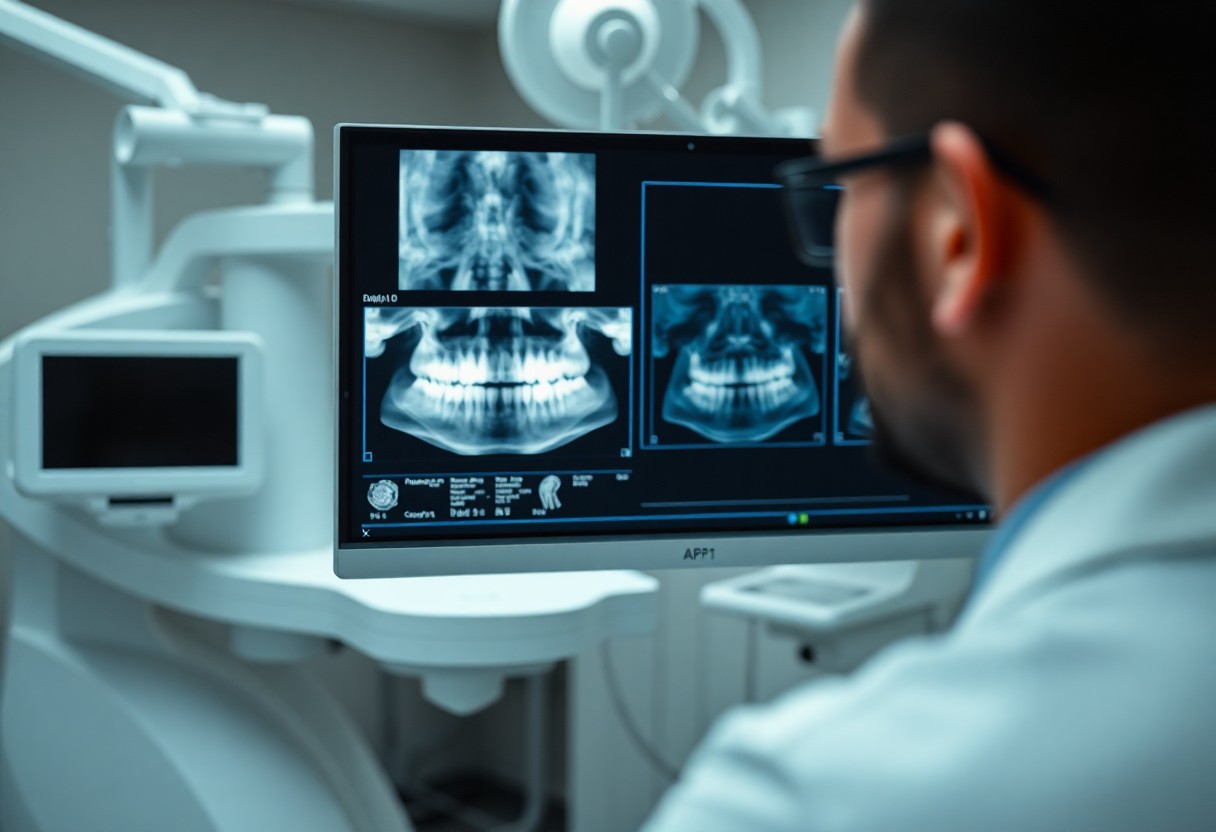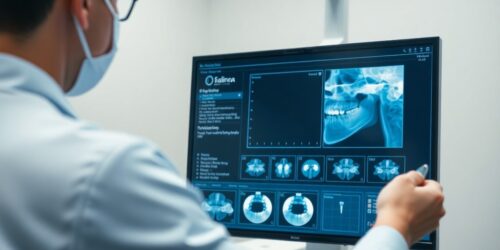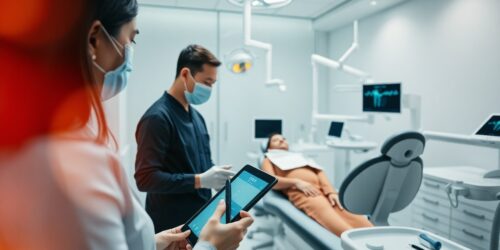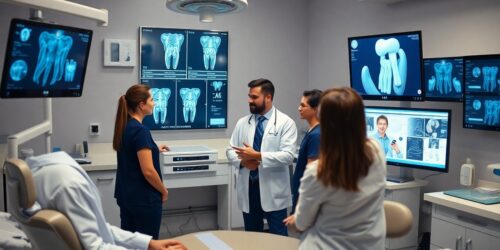The Impact Of Dental AI On X-ray Safety And Efficiency – What You Need To Know
You may be surprised to learn how dental AI is transforming the way dental professionals conduct X-rays, enhancing both safety and efficiency. This technology not only minimizes radiation exposure for patients but also improves diagnostic accuracy, ensuring that you receive the best possible care. By automating image analysis, dental AI reduces the workload for practitioners, allowing them to focus more on patient interaction and treatment planning. In this post, you will discover the significant benefits and implications of integrating AI into dental X-ray processes.

Key Takeaways:
- Enhanced Accuracy: Dental AI has significantly improved the precision of X-ray interpretations, reducing the chances of misdiagnosis.
- Reduced Radiation Exposure: AI enables optimization of X-ray settings, minimizing radiation doses for both patients and dental staff.
- Time Efficiency: AI algorithms expedite the analysis of X-ray images, allowing for quicker diagnosis and treatment planning.
- Streamlined Workflow: Integration of AI technology enhances operational efficiency, freeing up dental professionals to focus on patient care.
- Training Support: AI tools offer training modules for dental professionals, enhancing their skills in reading X-ray images.
Overview of Dental AI
Before delving into its specific applications, it’s imperative to grasp the broader concept of Dental AI. This rapidly evolving technology harnesses the power of artificial intelligence to enhance dental practices, improving accuracy in diagnostics and treatment planning. By integrating AI tools, you can expect increased efficiency in workflow, data analysis, and patient outcomes, ushering in a new era of precision in dentistry.
Definition and Functionality
Between human expertise and advanced algorithms, Dental AI serves as a bridge, capable of analyzing dental X-rays and other imaging effectively. It functions by utilizing machine learning techniques to identify patterns, detect anomalies, and assist practitioners in making informed decisions, thereby elevating the standards of patient care.
Historical Context in Dentistry
On the journey of dentistry, the integration of technology has been transformative. Historically, the practice relied heavily on manual techniques, which, while effective, were often limited by human ability and subjective interpretation. The introduction of X-rays in the early 20th century was a breakthrough, allowing for a more profound understanding of dental health. However, interpreting these images accurately posed challenges, revealing a need for enhanced support systems.
Due to this need, the concept of incorporating technology into dental processes continued to evolve. The advent of computer-aided design (CAD) and later, machine learning, revolutionized how practitioners approach diagnostics. By leveraging data from numerous X-ray images and employing algorithms to interpret them, you now have access to tools that significantly reduce errors and improve diagnostic accuracy. This transition highlights dentistry’s ongoing advancement and the promising potential of AI in supporting your practice’s efficiency and safety.

Advances in Dental X-ray Technology
You can now benefit from significant advances in dental X-ray technology that enhance safety and efficiency in your dental care. Modern X-ray machines are equipped with digital sensors that reduce radiation exposure while providing clearer images for better diagnostics. These innovations not only improve your overall experience but also help your dentist make informed decisions quickly and effectively.
Evolution of X-ray Techniques
Dental X-ray techniques have made remarkable strides over the years. From traditional film-based systems, dental practices have transitioned to digital X-rays, providing enhanced image quality and reduced radiation levels. As a result, you can expect more accurate diagnoses and comprehensive treatment plans tailored to your needs.
Integration of AI in Imaging
Evolution in AI technology is fundamentally transforming how dental imaging is conducted. By incorporating AI algorithms into imaging software, you will find improved accuracy in the interpretation of X-rays, which leads to quicker diagnoses and a significant reduction in misinterpretations. The integration of AI-driven tools not only enhances patient safety by ensuring lower radiation doses but also streamlines workflow for dental professionals. As a result, your dental visits can be both safer and more efficient, allowing for timely interventions and better oral health outcomes.

Enhancing Patient Safety
Once again, dental AI is revolutionizing the field by significantly enhancing patient safety. By harnessing advanced algorithms, AI-driven tools improve the overall efficacy of dental X-rays, minimizing the inherent risks associated with radiographic procedures. This means that you can feel more secure about your dental visits, as AI ensures a higher standard for safety measures, ultimately paving the way for a healthier dental experience.
Reduced Radiation Exposure
At the forefront of dental AI’s benefits is its ability to drastically reduce radiation exposure during X-ray procedures. AI operates with precision, allowing for optimized imaging techniques that require fewer exposures, which can ultimately enhance your safety and well-being.
Improved Accuracy in Diagnosis
Diagnosis plays a vital role in your dental health, and AI has shown remarkable improvements in the accuracy of identifying oral conditions. Thanks to AI’s advanced imaging analysis, you can now benefit from enhanced detection capabilities that enable more precise treatment plans.
Exposure to X-rays can raise concerns, but with AI’s sophisticated processing abilities, the accuracy of your diagnosis is greatly improved. This means better identification of potential issues such as cavities, fractures, and periodontal diseases. The increased accuracy leads to timely interventions, preventing complications down the line and promoting a healthier mouth. By reducing diagnostic errors, AI helps ensure that you receive the precise care necessary for optimal oral health, so you can make informed decisions about your treatment options.
Efficiency in Dental Practices
For dental practices, incorporating AI technology can significantly enhance overall efficiency. By automating routine tasks and assisting with diagnostic processes, you can reduce the time spent on each patient without compromising care quality. This increased efficiency translates to more patients served daily, optimizing both workflow and profitability.
Streamlined Workflow Processes
About integrating AI into your dental practice means enhancing your workflow processes. AI tools can assist with patient scheduling, data management, and even preliminary diagnoses, allowing you and your staff to focus on providing exceptional care. This streamlining leads to a more organized and efficient practice.
Time Management Benefits
At the core of AI’s impact on your practice is its ability to improve time management. By automating tedious tasks, AI frees up valuable time that can be redirected towards direct patient care and relationship building, which ultimately enhances the patient experience.
Due to AI’s ability to automate routine processes, you find yourself with more time to focus on patient interaction and care. This means you can engage with patients more effectively, addressing their concerns and educating them about their treatment. Additionally, with faster diagnostics and improved scheduling, your team can minimize patient wait times, enhancing satisfaction. In this way, AI not only boosts operational efficiency but also cultivates a more patient-centric environment, which is imperative for long-term success in your dental practice.
AI’s Role in Image Interpretation
Not only does AI enhance the speed of x-ray image processing, but it also significantly improves the accuracy of image interpretation. By utilizing advanced algorithms and deep learning techniques, AI can identify anomalies and dental issues that may be overlooked by the human eye. This means you can trust that your patients receive timely diagnoses and effective treatments while also ensuring that safety standards are met in the imaging process.
Diagnostic Support Tools
Against the backdrop of traditional diagnostic methods, AI-powered tools serve as indispensable assets in contemporary dentistry. These support mechanisms not only analyze x-ray images efficiently but also provide suggestions that enhance your diagnostic capabilities. With such tools, tracking changes over time becomes easier, allowing you to adjust treatment plans based on data-driven insights.
Minimizing Human Error
Minimizing human error in dental diagnostics is one of the most significant advantages of integrating AI into imaging processes.
Role of AI in this context is transformative. It actively reduces the chance of oversight by providing a second set of eyes on your diagnostic images. The AI’s unparalleled ability to analyze vast amounts of data at lightning speeds ensures that no potential red flags go unnoticed. As a result, you can enhance patient safety and improve treatment outcomes while also minimizing the risks associated with misdiagnoses that could lead to serious consequences.
Ethical Considerations and Challenges
Keep in mind that the integration of dental AI in X-ray procedures brings forward various ethical challenges. It’s vital to navigate concerns regarding patient consent, accuracy in diagnostics, and the potential for unequal access to advanced technologies. Practitioners must balance the benefits of AI-enhanced safety and efficiency with their ethical responsibilities towards patient welfare and equitable care.
Data Privacy Concerns
On implementing dental AI, you must assess data privacy risks associated with patient information. With vast amounts of sensitive data being collected, ensuring that this information is securely stored and not misused is paramount. Breaches can lead to not only legal implications but also a loss of patient trust.
Regulatory Frameworks
Any advancement in dental AI necessitates robust regulatory frameworks to guide its implementation and use. You need to ensure compliance with existing health regulations to safeguard patient rights and uphold ethical standards within the practice. Furthermore, working closely with regulatory bodies will help ensure that AI technologies meet industry specifications and patient safety benchmarks.
Concerns regarding regulatory frameworks are gaining attention as dental AI technology advances. It is vital that you stay informed about the evolving guidelines from organizations like the FDA and HIPAA, which provide vital standards for patient data protection and device approval. Establishing clear protocols will not only protect patients but also help your practice avoid legal repercussions that could arise from non-compliance. As dental AI becomes more widespread, regular training and updates on these regulations will be vital for you and your team to ensure ongoing adherence and the safety of your patients.
Final Words
To wrap up, understanding the impact of dental AI on X-ray safety and efficiency is imperative for modern dental practices. You can enhance patient care by leveraging AI technologies to minimize radiation exposure while maximizing diagnostic accuracy. By integrating these advanced tools into your workflow, you not only improve the safety of your procedures but also boost the overall efficiency of your practice. Embracing AI in dentistry equips you to provide better services and maintain a competitive edge in the evolving landscape of oral healthcare.
FAQ
Q: How does dental AI enhance X-ray safety?
A: Dental AI enhances X-ray safety by integrating advanced algorithms that can analyze X-ray images for irregularities or signs of dental issues. This analysis can help reduce the number of unnecessary X-rays taken, thus minimizing a patient’s exposure to radiation. Moreover, AI can assist in ensuring that the X-ray equipment is functioning optimally, thereby maintaining safety standards.
Q: In what ways does AI improve the efficiency of dental X-rays?
A: AI improves the efficiency of dental X-rays by streamlining the process of image capture and analysis. With automated image enhancement and interpretation, dentists can receive quicker feedback on X-ray results, allowing for more rapid diagnosis and treatment planning. This efficiency reduces the time patients spend in the chair and optimizes workflow in dental practices.
Q: Are there specific AI technologies used in dental X-ray analysis?
A: Yes, several AI technologies are commonly used in dental X-ray analysis, including machine learning algorithms and deep learning models. These technologies can be trained on vast datasets of dental images to accurately identify patterns and anomalies, such as cavities or tooth decay, thus providing valuable insights to dental professionals.
Q: What role does AI play in the training of dental professionals regarding X-ray interpretation?
A: AI can serve as a powerful educational tool in the training of dental professionals. By providing simulations and assessments based on a wide range of X-ray images, AI tools can help students and practitioners enhance their diagnostic skills. Feedback from AI systems can pinpoint areas for improvement, making the training process more targeted and effective.
Q: Can AI eliminate the need for traditional X-ray methods in dentistry?
A: While AI greatly enhances the capabilities of traditional X-ray methods, it is unlikely to eliminate them entirely. Instead, AI serves as an adjunct to traditional practices by improving accuracy and safety. Traditional X-ray techniques are still necessary for capturing the fundamental images needed for diagnoses, whereas AI enhances interpretation and decision-making.
Q: What are some challenges associated with integrating AI into dental X-ray practices?
A: Integrating AI into dental X-ray practices can face several challenges, including the need for substantial initial investments in technology and training. Additionally, there may be resistance from dental professionals who are accustomed to traditional methods or who are skeptical of AI’s reliability. Ensuring compliance with healthcare regulations and managing data privacy concerns are also important challenges that need to be addressed.
Q: How does the use of AI in dental X-rays impact patient experience?
A: The use of AI in dental X-rays significantly enhances the patient experience by reducing wait times and expediting diagnoses. Patients benefit from more personalized care as AI can provide tailored recommendations based on their specific imaging results. Furthermore, the reduction in radiation exposure and the potential for improved treatment outcomes contribute to a more positive dental visit.




